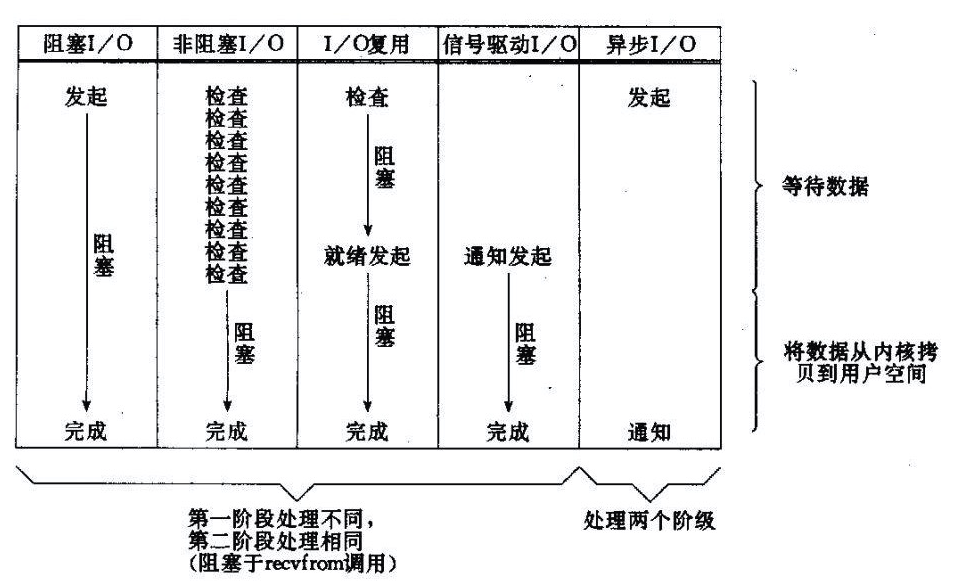初悉java nio channel
介绍
Channel Api
这里主要看一下FileChannel都有哪些api吧
| 方法 | 描述 |
|---|---|
| int read(ByteBuffer dst) | 从Channel中读数据到ByteBuffer |
| long read(ByteBuffer[] dsts) | 将Channel中的数据”分散”到ByteBuffer[] |
| int write(ByteBuffer src) | 将ByteBuffer中的数据写入到Channel |
| long write(ByteBuffer[] srcs) | 将ByteBuffer[]中的数据”聚集”到Channel |
| long position() | 返回此通道的文件位置 |
| FileChannel position(long p) | 设置此通道的文件位置 |
| long size() | 返回此通道的文件当前大小 |
| FileChannel truncate(long s) | 将此通道的文件截取为给定大小 |
| void force(boolean metaData) | 强制将所有此通道的文件更新写入到存储设备中 |
从参数中可以看出,Channel主要与ByteBuffer接触。
使用demo
@Test
public void test1() throws IOException {
// 创建一个读取文件数据的通道
// file.txt中内容为:deepDarkFantasy
FileChannel fileChannel = FileChannel.open(Paths.get("file.txt"), StandardOpenOption.READ);
// 创建一个非直接缓存区
ByteBuffer buffer = ByteBuffer.allocate(512);
// 从通道中读取数据到缓存区
fileChannel.read(buffer);
// 通俗讲就是切换成读模式
buffer.flip();
byte[] dst = new byte[buffer.limit()];
// 将读取到的数据存到dst中
buffer.get(dst, 0, buffer.limit());
// 这里输出的也是deepDarkFantasy
print("dst: " + new String(dst, 0, dst.length));
}这是一个最基本的使用方法,虽然我现在不知道有什么用,跟bio的方式,倒是使用方法复杂的挺多
是不是其实这个过程是没有阻塞的?是直接读?
看下图的话,是不是上部分操作是没有那个检查操作的?直接进行阻塞那个操作(即读操作)?きになるわ

这里先跳过了,之后知道了再回来(
其他使用方法
好像都跟ByteBuffer用起来差不多?要么读要么写
不过transferForm好像有点意思
@Test
public void transferTest() throws IOException {
// 读一个文件,文件中的数据为`deepDarkFantasy`,长度为15
FileChannel inChannel = FileChannel.open(Paths.get("src.txt"), StandardOpenOption.WRITE,StandardOpenOption.READ);
// 打算输出的文件,是一个空的文件
FileChannel outChannel = FileChannel.open(Paths.get("target.txt"), StandardOpenOption.WRITE);
// 将管道`inChannel`中的数据转移到`outChannel`
outChannel.transferFrom(inChannel,0,inChannel.size());
// 输出15
print(inChannel.size());
// 输出15
print(outChannel.size());
outChannel.close();
inChannel.close();
}本来以为转移的只是通道对象即inChannel中的数据,没想到是调用完该方法之后,deepDarkFantasy已经存在在target.txt文件中了。
不知道是不是被transfer这个单词误导了,以为转移了数据就没了,结果该数据还是存在在原来的文件中,感觉像是那种复制粘贴的操作。
“聚集”、”分散”
long read(ByteBuffer[] dsts) ==> 将Channel中的数据”分散”到ByteBuffer[]
long write(ByteBuffer[] srcs) ==> 将ByteBuffer[]中的数据”聚集”到Channel
有这样两个api,其实看参数就大概知道了
读的话就是将channel中的数据读到
ByteBuffer数组中,但要注意的是,不是将通道中的所有数据都在数组中复制一遍,而是按照数组的顺序,依此将数据读到缓存中。本来打算看一看底层是怎么实现的,emm是sun的实现没有源码看,只有反编译看不懂了太抽象了
而写的话,就是把
ByteBuffer数组中的内存依此通过channel写到文件里